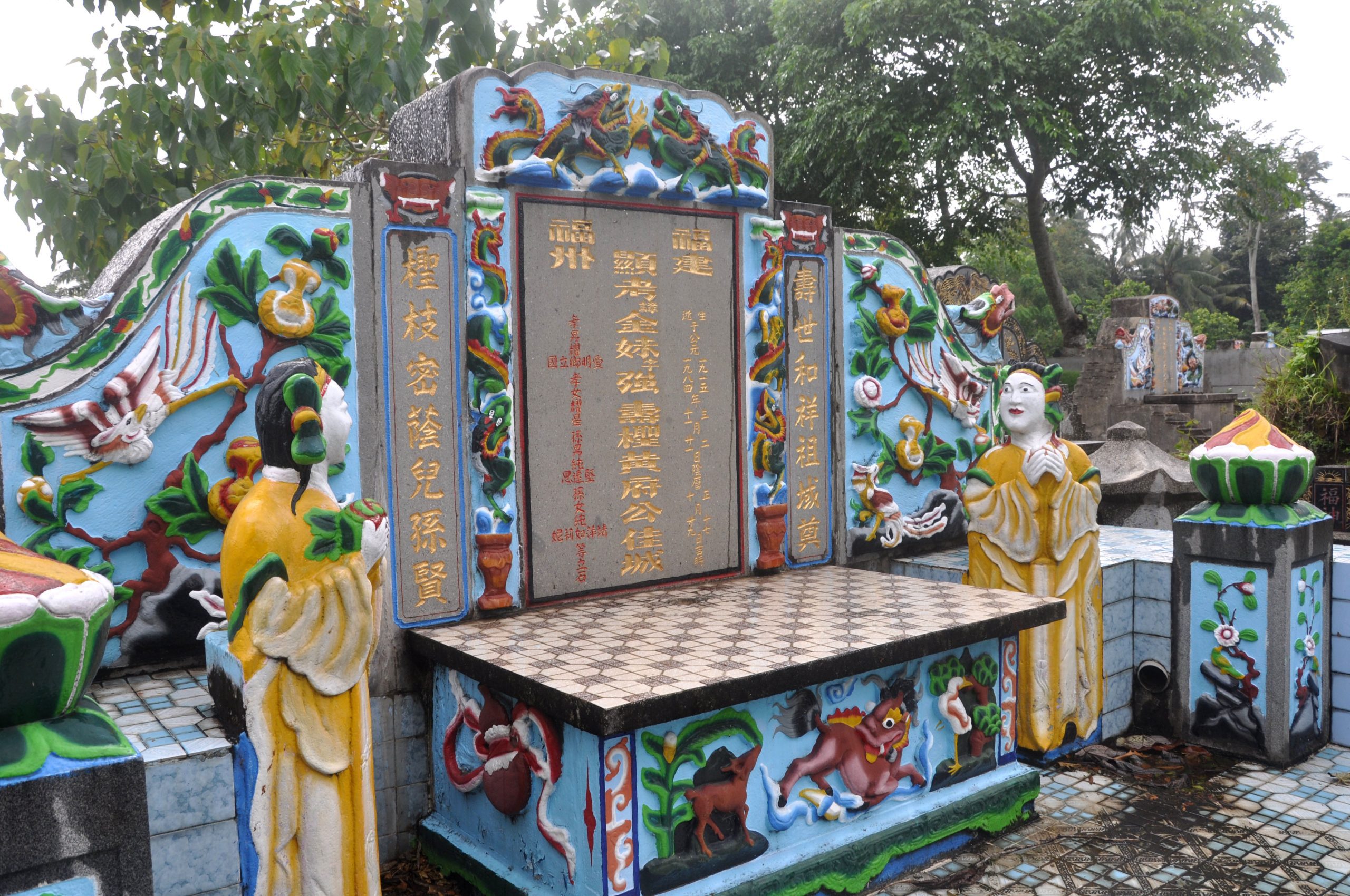Lombok's #1 Tourism Magazine
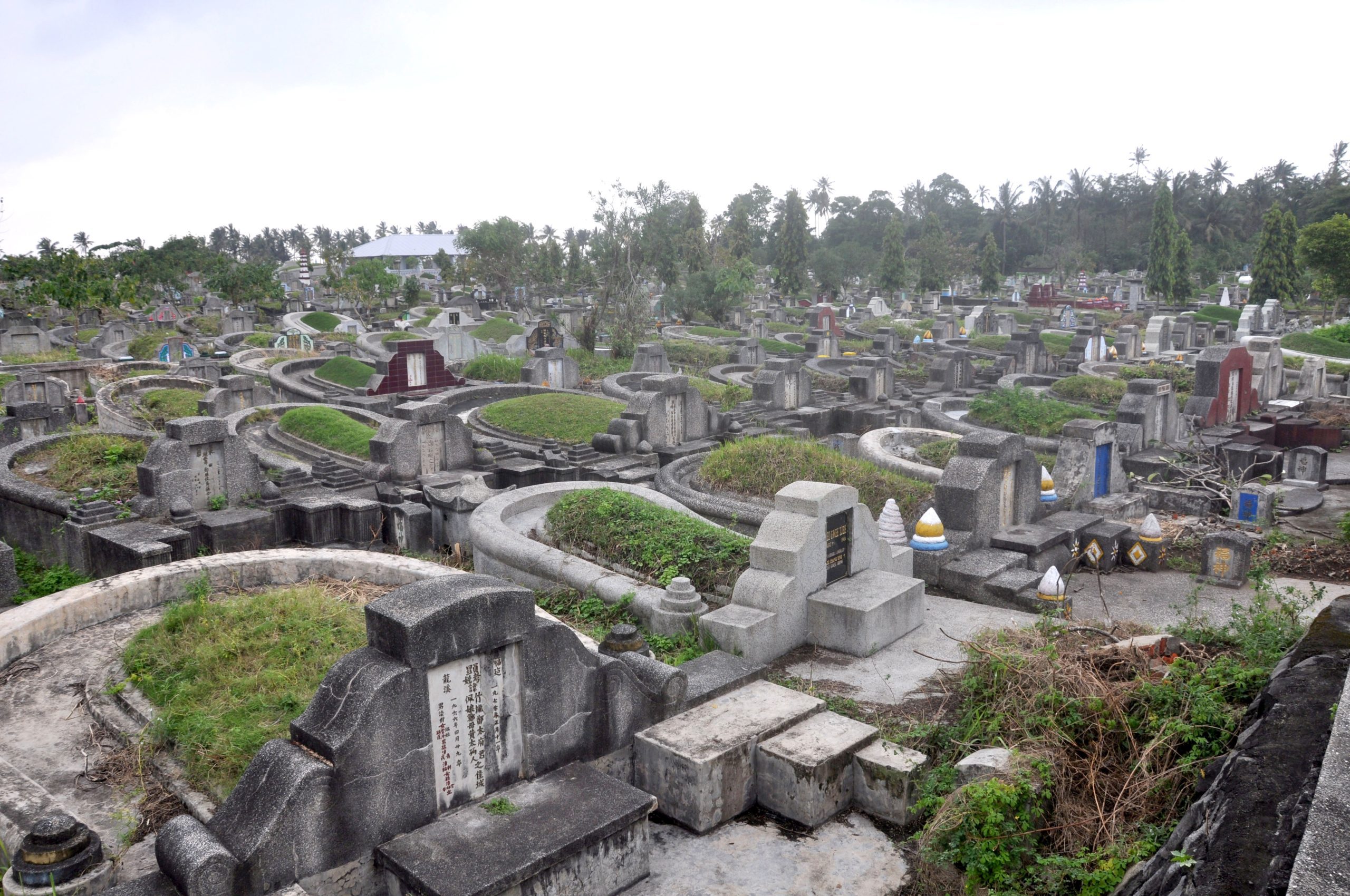 Most visitors travelling to Senggigi will notice the large Chinese cemetery on the left side of the road a couple of kilometres north of Ampenan.
Most visitors travelling to Senggigi will notice the large Chinese cemetery on the left side of the road a couple of kilometres north of Ampenan.
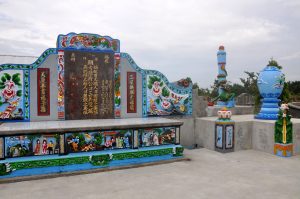 Kuburan Cina Bintaro (Bintaro Chinese Cemetary) spreads over a vast area and is filled with huge rounded and mounded Chinese graves, many of which are beautifully decorated and painted in bright colours.
Kuburan Cina Bintaro (Bintaro Chinese Cemetary) spreads over a vast area and is filled with huge rounded and mounded Chinese graves, many of which are beautifully decorated and painted in bright colours.
Cremation is not common among the Chinese and the burial of the dead is a matter taken very seriously in Chinese society. Funeral arrangements can either bring good fortune, or wreak bad luck and disaster on the family of the deceased if incorrectly carried out.
Chinese funerals traditionally follow a prescribed form with rites befitting a person’s age, status, etc., and must be performed correctly, even if this means the family of the deceased must go into debt.
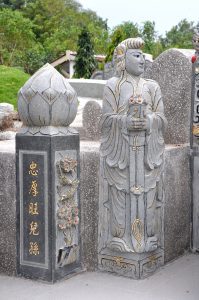 Family members consult the Chinese Almanac to determine the best date to hold the funeral ceremony, and funeral homes and local temples help the family prepare the body and coordinate the funeral rites.
Family members consult the Chinese Almanac to determine the best date to hold the funeral ceremony, and funeral homes and local temples help the family prepare the body and coordinate the funeral rites.
Preparation for a funeral often begins before a death has occurred and a coffin will already have been ordered by the family of a person close to death. A traditional Chinese coffin is rectangular with three ‘humps’, although in modern times it is becoming common for a western style coffin to be used.
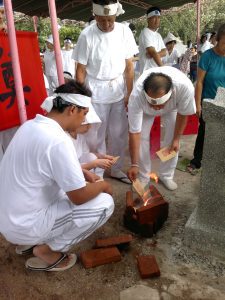 Like much in traditional Chinese life, burials require a balance between yin and yang elements. In Chinese culture, houses for the living are known as yang houses; whereas those for the dead, or graves, are known as yin houses.
Like much in traditional Chinese life, burials require a balance between yin and yang elements. In Chinese culture, houses for the living are known as yang houses; whereas those for the dead, or graves, are known as yin houses.
Yin houses for the deceased reflect the same qualities desired in yang houses – elegant, elaborate and beautifully decorated houses are considered pleasing to both living and dead.
Traditionally, the Chinese have regarded the form of an armchair as the ideal shape for a grave. An armchair gives a sense of wealth, comfort and dignity. In historic times, only the elite or ruling class could afford armchairs.
Moreover, armchairs symbolise authority and power, as the armchair was traditionally the seat for the magistrate when he presided in court in the olden days.
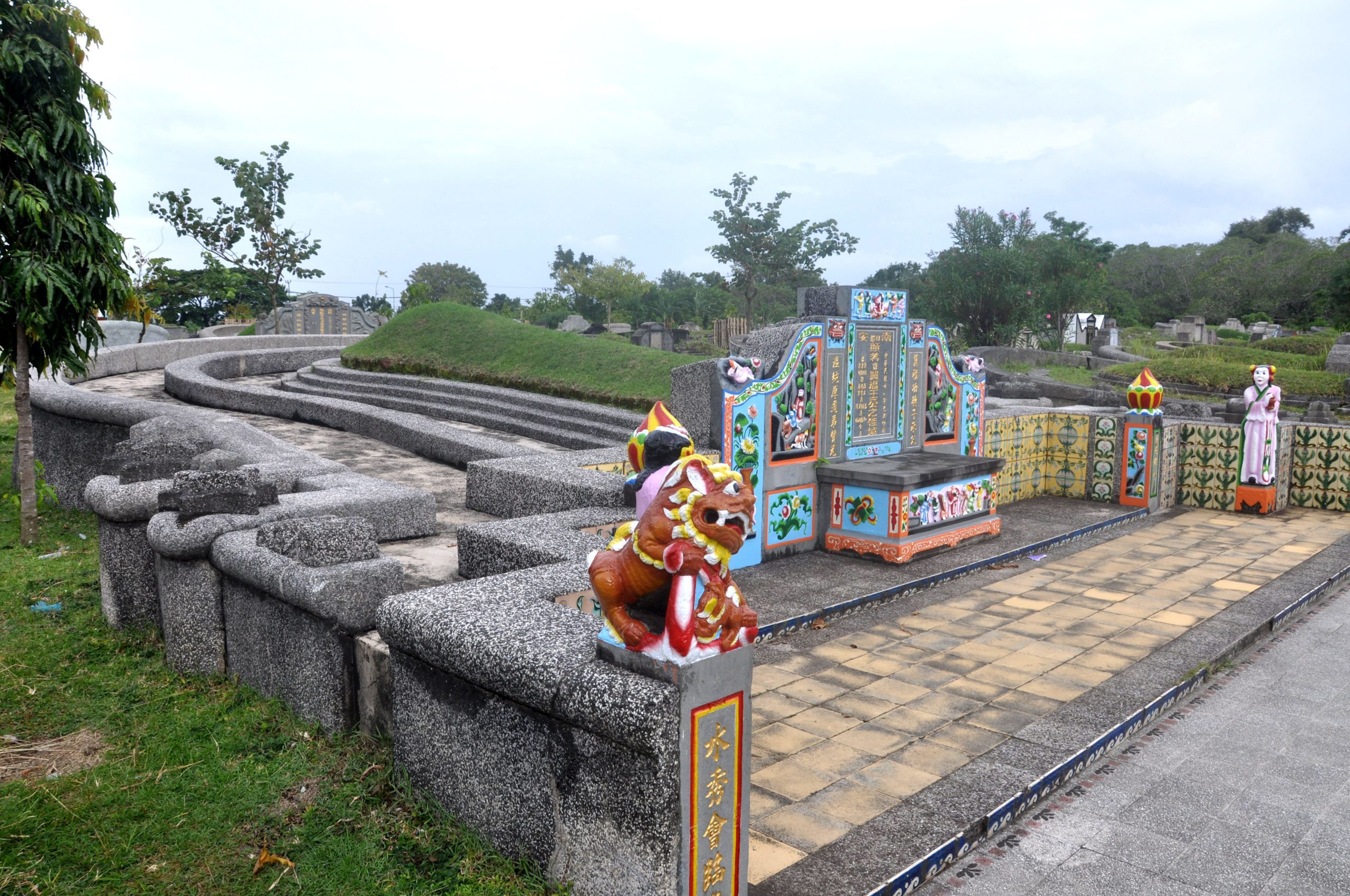 By creating a grave in the shape of an armchair, people believed that their ancestors could enjoy comfort, dignity, and pride in the yin world and, therefore, the interaction between the yin and the yang would be harmonious and beneficial.
By creating a grave in the shape of an armchair, people believed that their ancestors could enjoy comfort, dignity, and pride in the yin world and, therefore, the interaction between the yin and the yang would be harmonious and beneficial.
For some, there is also the hope that the deceased may inherit the power symbolised by the armchair in the afterlife, thus enabling them to bestow further good luck on the living from their elevated status in the otherworld.
The history of building graves in the armchair shape can be traced back to the Northern Song Dynasty, from 960-1127 AD, and has been the preferred shape for Chinese graves until present time.
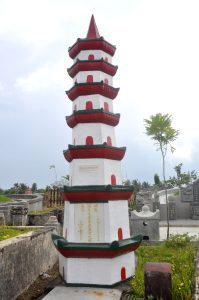 Hence, many of the graves in the Ampenan Chinese Cemetery are shaped like large, round armchairs with mounded centres and a curved edge representing the padded back and arms of the chair.
Hence, many of the graves in the Ampenan Chinese Cemetery are shaped like large, round armchairs with mounded centres and a curved edge representing the padded back and arms of the chair.
However, these armchair graves tend to be very large, are expensive to build and take up considerable space. Bintaro Cemetery is almost full now and it is likely that a new cemetery will be constructed in the next few years.
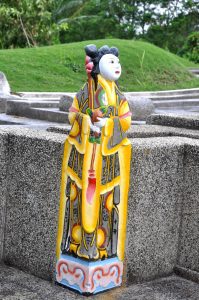 In China and Hong Kong, where space is limited and land must be paid for, such armchair graves become prohibitively expensive and many people now opt for cremation and columbaria (vaults with niches in which the cremated remains are stored).
In China and Hong Kong, where space is limited and land must be paid for, such armchair graves become prohibitively expensive and many people now opt for cremation and columbaria (vaults with niches in which the cremated remains are stored).
Not all of the graves follow the armchair shape. Some are large square or rectangular shrines with extravagant headstones, and quite a few are Christian graves, decorated with crosses and beautifully carved religious scenes.
The older graves tend to be smaller and simpler and it is interesting to see that, as society has become more affluent, so the graves have become more elaborate.
Some of the newer graves in the Chinese cemetery copy modern Hong Kong designs, with a moulded concrete porch-shaped framework in which a tablet of polished granite or other stone is set. The tablet on the grave usually gives the name of the person buried there, as well as the dates of birth and death.
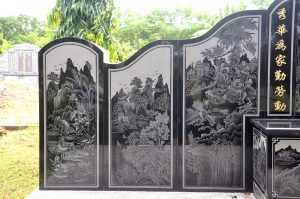 As you wander around the cemetery, you will see many examples of fine stonework and craftsmanship, with elaborate scenes and designs carved into the polished stone.
As you wander around the cemetery, you will see many examples of fine stonework and craftsmanship, with elaborate scenes and designs carved into the polished stone.
Many of the graves have richly painted depictions of elegant scenes, goods and riches, or carefully sculptured statues of friends and attendants surrounding the grave.
This follows the belief that, just as the living require money and material objects, friends and helpers, so do the dead. For this reason, paper money and modelled representations of cars, televisions, clothes, statues and other possessions are burnt at the gravesite… symbolically sending these goods to the deceased to provide comforts in the afterlife.
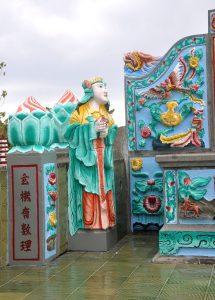 The Chinese cemetery is still used today and visitors may have the opportunity to see a Chinese burial taking place. Mourners in white robes and peaked conical hats kneel and pray close to the gravesite, while family members pray alongside the coffin. Paper money and figurines are burnt and clouds of incense scent the air.
The Chinese cemetery is still used today and visitors may have the opportunity to see a Chinese burial taking place. Mourners in white robes and peaked conical hats kneel and pray close to the gravesite, while family members pray alongside the coffin. Paper money and figurines are burnt and clouds of incense scent the air.
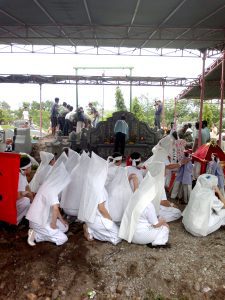
The cemetery will be filled with large boards decorated with floral arrangements and words of sympathy for the family or poetry for the deceased.
If you want to witness the ceremony, no one will object… simply show the same respect as you would at any funeral and do not intrude upon the mourners or the family beside the coffin.
The cemetery is also a poignant reminder of all the early Chinese settlers and citizens who died in the Communist purge under Suharto rule in 1965.
In a backlash against perceived “communist plots”, violence swept across Indonesia with the Chinese the target for brutal organised attacks. In Lombok alone, an estimated 50,000 Chinese people were slain and many more were tortured and imprisoned.
The dates on some of the graves bear testimony to this shameful period of Indonesian history and the Chinese who suffered.
The cemetery is a peaceful and interesting place to visit, wandering amongst the gently curved mounds, taking in the elaborate artwork and decoration on the graves, and gaining an insight into the fascinating Chinese culture.
